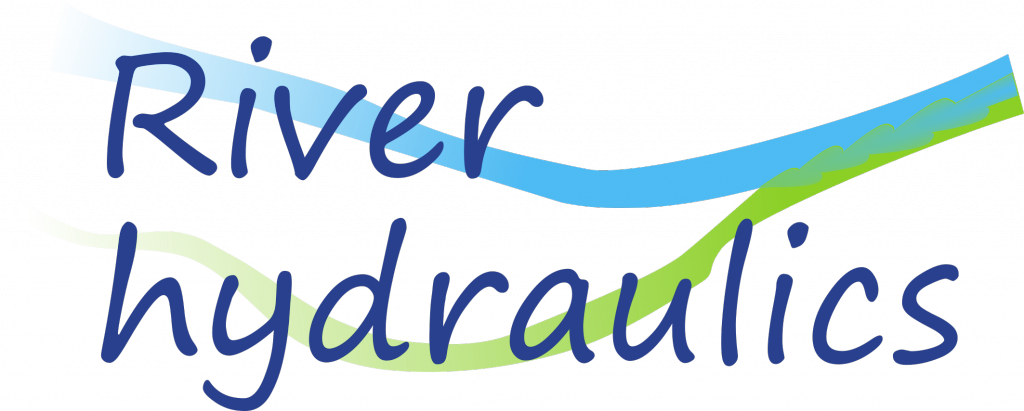Main characteristics
The Urban Model for the Study of Flood Risk, called ‘MURI‘ ( Modèle Urbain pour l’Étude du Risque d’Inondation) was built in 2017. MURI is a platform of 5.4 m x 3.8 m, which can be tilted from 0 to 5% in the longitudinal and transverse directions. MURI is supplied with water by 3 inlet tanks, and is also equipped with 3 outlet tanks and 6 inlet/outlet side tanks. The current geometry studied consists in 3 longitudinal streets and 3 transverse streets defining 16 rectangular urban blocks. The platform is also equipped, at the lower level, with pipes that model the sewage system and can be vertically connected with the streets.
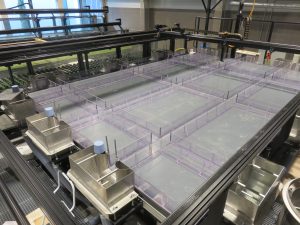
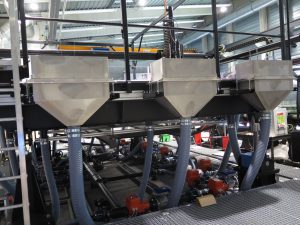
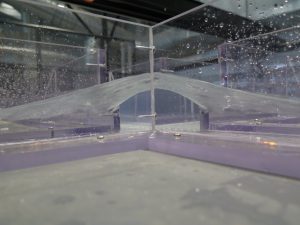
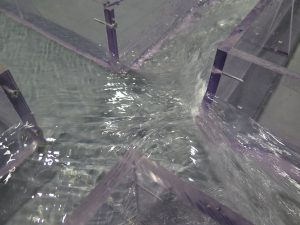
From left to right, and top to bottom: current geometry with 3 longitudinal streets and 3 transverse streets; the three upstream inlet tanks; flow in a cross-road with two inflows with Q= 4.5 L/s each (experiments of Ms student Cécile Lalanne, 2017)
Study of the urban flood processes
-
Transverse water exchanges between streets and building blocks
-
Vertical water exchanges between streets and sewerage system


